Modeling of nonlinear viscous stress in encapsulating shells of lipid-coated contrast agent microbubbles
- PMID: 18990417
- PMCID: PMC2826140
- DOI: 10.1016/j.ultras.2008.09.007
Modeling of nonlinear viscous stress in encapsulating shells of lipid-coated contrast agent microbubbles
Abstract
A general theoretical approach to the development of zero-thickness encapsulation models for contrast microbubbles is proposed. The approach describes a procedure that allows one to recast available rheological laws from the bulk form to a surface form which is used in a modified Rayleigh-Plesset equation governing the radial dynamics of a contrast microbubble. By the use of the proposed procedure, the testing of different rheological laws for encapsulation can be carried out. Challenges of existing shell models for lipid-encapsulated microbubbles, such as the dependence of shell parameters on the initial bubble radius and the "compression-only" behavior, are discussed. Analysis of the rheological behavior of lipid encapsulation is made by using experimental radius-time curves for lipid-coated microbubbles with radii in the range 1.2-2.5 microm. The curves were acquired for a research phospholipid-coated contrast agent insonified with a 20 cycle, 3.0 MHz, 100 kPa acoustic pulse. The fitting of the experimental data by a model which treats the shell as a viscoelastic solid gives the values of the shell surface viscosity increasing from 0.30 x 10(-8) kg/s to 2.63 x 10(-8) kg/s for the range of bubble radii, indicated above. The shell surface elastic modulus increases from 0.054 N/m to 0.37 N/m. It is proposed that this increase may be a result of the lipid coating possessing the properties of both a shear-thinning and a strain-softening material. We hypothesize that these complicated rheological properties do not allow the existing shell models to satisfactorily describe the dynamics of lipid encapsulation. In the existing shell models, the viscous and the elastic shell terms have the linear form which assumes that the viscous and the elastic stresses acting inside the lipid shell are proportional to the shell shear rate and the shell strain, respectively, with constant coefficients of proportionality. The analysis performed in the present paper suggests that a more general, nonlinear theory may be more appropriate. It is shown that the use of the nonlinear theory for shell viscosity allows one to model the "compression-only" behavior. As an example, the results of the simulation for a 2.03 microm radius bubble insonified with a 6 cycle, 1.8 MHz, 100 kPa acoustic pulse are given. These parameters correspond to the acoustic conditions under which the "compression-only" behavior was observed by de Jong et al. [Ultrasound Med. Biol. 33 (2007) 653-656]. It is also shown that the use of the Cross law for the modeling of the shear-thinning behavior of shell viscosity reduces the variance of experimentally estimated values of the shell viscosity and its dependence on the initial bubble radius.
Figures
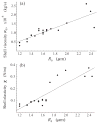
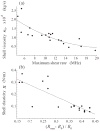
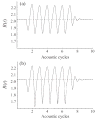
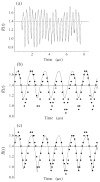
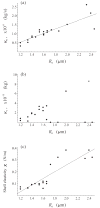

Similar articles
-
Resonance frequencies of lipid-shelled microbubbles in the regime of nonlinear oscillations.Ultrasonics. 2009 Feb;49(2):263-8. doi: 10.1016/j.ultras.2008.09.006. Epub 2008 Sep 30. Ultrasonics. 2009. PMID: 18977009 Free PMC article.
-
Modeling complicated rheological behaviors in encapsulating shells of lipid-coated microbubbles accounting for nonlinear changes of both shell viscosity and elasticity.Phys Med Biol. 2013 Feb 21;58(4):985-98. doi: 10.1088/0031-9155/58/4/985. Epub 2013 Jan 23. Phys Med Biol. 2013. PMID: 23339902
-
Microbubble oscillating in a microvessel filled with viscous fluid: A finite element modeling study.Ultrasonics. 2016 Mar;66:54-64. doi: 10.1016/j.ultras.2015.11.010. Epub 2015 Nov 28. Ultrasonics. 2016. PMID: 26651263
-
Review of shell models for contrast agent microbubbles.IEEE Trans Ultrason Ferroelectr Freq Control. 2011 May;58(5):981-93. doi: 10.1109/TUFFC.2011.1899. IEEE Trans Ultrason Ferroelectr Freq Control. 2011. PMID: 21622054 Review.
-
Bubble dynamics involved in ultrasonic imaging.Expert Rev Mol Diagn. 2006 May;6(3):493-502. doi: 10.1586/14737159.6.3.493. Expert Rev Mol Diagn. 2006. PMID: 16706749 Review.
Cited by
-
Encapsulated microbubbles and echogenic liposomes for contrast ultrasound imaging and targeted drug delivery.Comput Mech. 2014 Mar;53(3):413-435. doi: 10.1007/s00466-013-0962-4. Comput Mech. 2014. PMID: 26097272 Free PMC article.
-
Impulse response method for characterization of echogenic liposomes.J Acoust Soc Am. 2015 Apr;137(4):1693-703. doi: 10.1121/1.4916277. J Acoust Soc Am. 2015. PMID: 25920822 Free PMC article.
-
Post-processing radio-frequency signal based on deep learning method for ultrasonic microbubble imaging.Biomed Eng Online. 2019 Sep 11;18(1):95. doi: 10.1186/s12938-019-0714-6. Biomed Eng Online. 2019. PMID: 31511011 Free PMC article.
-
Wave scattering from encapsulated microbubbles subject to high-frequency ultrasound: contribution of higher-order scattering modes.J Acoust Soc Am. 2009 Oct;126(4):1766-75. doi: 10.1121/1.3203917. J Acoust Soc Am. 2009. PMID: 19813791 Free PMC article.
-
Resonance frequencies of lipid-shelled microbubbles in the regime of nonlinear oscillations.Ultrasonics. 2009 Feb;49(2):263-8. doi: 10.1016/j.ultras.2008.09.006. Epub 2008 Sep 30. Ultrasonics. 2009. PMID: 18977009 Free PMC article.
References
-
- Becher H, Burns PN. Handbook of Contrast Echocardiography: Left ventricular function and myocardial perfusion. Vol. 1. Springer Verlag; New York: 2000. pp. 1–44.
-
- Goldberg BB, Raichlen JS, Forsberg F, editors. Ultrasound Contrast Agents: Basic Principles and Clinical Applications. Martin Dunitz; London: 2001.
-
- Szabo T. Diagnostic Ultrasound Imaging: Inside Out. Academic; New York: 2004.
-
- de Jong N, Hoff L, Skotland T, Bom N. Absorption and scatter of encapsulated gas filled microspheres: Theoretical consideration and some measurements. Ultrasonics. 1992;30:95–103. - PubMed
-
- de Jong N, Hoff L. Ultrasound scattering of Albunex microspheres. Ultrasonics. 1993;31:175–181. - PubMed
Publication types
MeSH terms
Substances
Grants and funding
LinkOut - more resources
Full Text Sources
Other Literature Sources
Research Materials

